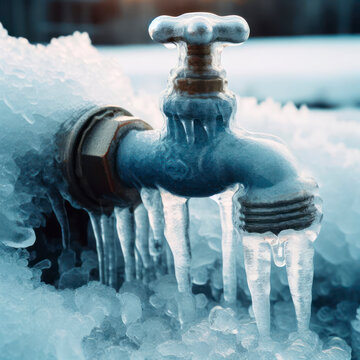What're your insights and beliefs about How to Prevent Your Pipes From Freezing?

Cold weather can damage your pipes, specifically by freezing pipes. Below's just how to avoid it from occurring and what to do if it does.
Introduction
As temperatures decline, the danger of frozen pipes increases, potentially resulting in costly repair services and water damages. Comprehending how to avoid frozen pipelines is crucial for house owners in cool environments.
Avoidance Tips
Protecting prone pipelines
Cover pipelines in insulation sleeves or make use of warm tape to shield them from freezing temperatures. Concentrate on pipelines in unheated or external areas of the home.
Home heating techniques
Maintain indoor rooms effectively warmed, especially locations with pipes. Open closet doors to permit warm air to flow around pipes under sinks.
How to determine frozen pipelines
Search for lowered water circulation from faucets, unusual smells or noises from pipelines, and visible frost on revealed pipelines.
Long-Term Solutions
Structural adjustments
Take into consideration rerouting pipes far from exterior walls or unheated areas. Include extra insulation to attics, cellars, and crawl spaces.
Updating insulation
Purchase premium insulation for pipelines, attic rooms, and wall surfaces. Proper insulation assists preserve consistent temperature levels and reduces the danger of icy pipes.
Shielding Outside Pipes
Yard tubes and exterior taps
Separate and drain pipes garden hoses before winter. Mount frost-proof faucets or cover outside taps with shielded caps.
Understanding Frozen Pipes
What triggers pipelines to ice up?
Pipes freeze when exposed to temperature levels listed below 32 ° F (0 ° C) for extended durations. As water inside the pipelines ices up, it broadens, putting pressure on the pipe wall surfaces and potentially causing them to break.
Risks and problems
Frozen pipelines can cause supply of water disturbances, property damage, and pricey repair work. Ruptured pipelines can flood homes and trigger considerable structural damage.
Indications of Frozen Pipes
Recognizing frozen pipelines early can stop them from breaking.
What to Do If Your Pipes Freeze
Immediate activities to take
If you suspect icy pipes, maintain taps available to relieve stress as the ice thaws. Utilize a hairdryer or towels taken in hot water to thaw pipelines gradually.
Conclusion
Stopping icy pipelines requires aggressive measures and quick reactions. By recognizing the reasons, indicators, and safety nets, home owners can protect their plumbing during cold weather.
6 Proven Ways to Prevent Frozen Pipes and Protect Your Home
Disconnect and Drain Garden Hoses
Before winter arrives, start by disconnecting your garden hoses and draining any remaining water. Close the shut-off valves that supply outdoor hose bibs and leave the outdoor faucet open to allow any residual water to drain. For extra protection, consider using faucet covers throughout the colder months. It’s also important to drain water from any sprinkler supply lines following the manufacturer’s directions.
Insulate Exposed Pipes
Insulating your pipes is an effective way to prevent freezing. Pipe insulation is readily available at home improvement stores and is relatively inexpensive. Pay close attention to pipes in unheated areas such as the attic, basement, crawl spaces, or garage. Apply foam insulation generously to create a buffer against the cold. You can also wrap your pipes in heat tape or thermostat-controlled heat cables for added warmth.
Seal Air Leaks
Inspect your home for any cracks or openings that could let in cold air. Seal any holes around the piping in interior or exterior walls, as well as the sill plates where your home rests on its foundation. Additionally, make sure to keep your garage door closed unless you’re entering or exiting. Leaving it open creates a significant air leak that can lead to frozen pipes.
Allow Warm Air Circulation
During cold snaps, it’s essential to allow warm air to circulate evenly throughout your home. Leave interior doors ajar to promote better airflow. Open kitchen and bathroom cabinets to help distribute heat consistently around the rooms. If you have small children or pets, be sure to remove any household chemicals or potentially harmful cleaners from open cabinets for safety.
Let Faucets Drip
A small trickle of water can make a big difference in preventing ice formation inside your pipes. When temperatures drop significantly, start a drip of water from all faucets served by exposed pipes. This continuous flow helps prevent the water from freezing. Additionally, running a few faucets slightly can relieve pressure inside the pipes, reducing the chances of a rupture if the water inside does freeze.
https://choateshvac.com/6-proven-ways-to-prevent-frozen-pipes-and-protect-your-home/

I came across that article on Helpful Tips to Prevent Frozen Pipes this Winter while doing a search on the web. I beg you take the opportunity to distribute this blog entry if you liked it. Thanks a lot for your time invested reading it.
Request A Quote